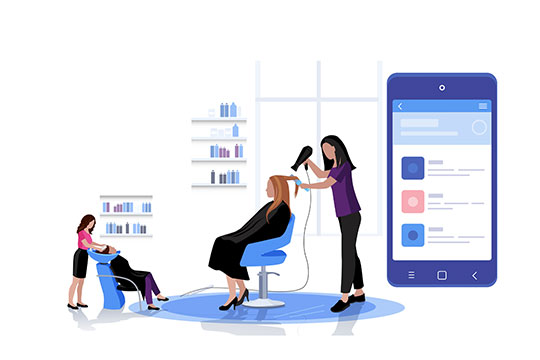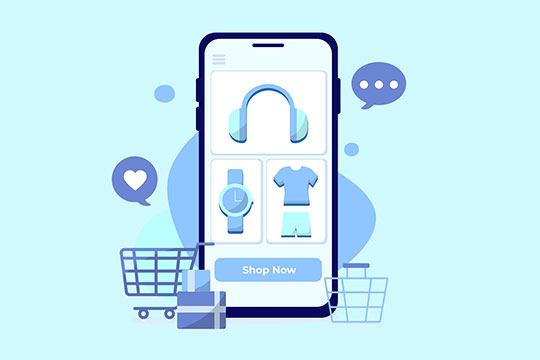E-learning has evolved as a significant instrument for education and professional development in the fast changing digital ecosystem. With the growing need for online learning platforms, creating your own e-learning app can unlock immense potential and open up new doors for learners all over the world. This detailed step-by-step guide will provide you with the knowledge and insights you need to go on the adventure of developing a strong and impactful e-learning app.
The education industry has seen a tremendous movement towards digital learning, with e-learning apps being the go-to solution for students of all ages and backgrounds. E-learning apps provide a flexible and accessible platform that caters to varied learning demands, whether it’s developing new skills, completing academic courses, or staying up to date with the newest industry trends.
Developing an e-learning software is an exciting endeavour that demands careful preparation and execution. You may create an app that stands out in a competitive market and provides an amazing learning experience by following a systematic strategy. This step-by-step guide will bring you through each stage of the development process, giving you the tools you need to turn your vision into a reality.
Throughout this book, we will look at important topics including identifying your goals, designing a user-centric experience, building a solid backend infrastructure, and integrating interactive features. You’ll discover how to optimise your app for mobile platforms, integrate analytics for data-driven insights, and ensure quality through rigorous testing and quality assurance.
Furthermore, effective launch and promotion of your e-learning app will be covered, emphasising the necessity of marketing strategies and collaborations in reaching your target audience. You can build your app as a trusted and preferred choice for learners seeking information and advancement if you take the appropriate approach.
Begin this journey to realise the full potential of e-learning and make a lasting difference in the lives of learners all around the world. Let’s get started on the step-by-step process to making your e-learning app a reality.
This step-by-step guide will provide you with the knowledge and insights to unlock the potential of e-learning by creating a powerful app that stands out in the competitive market.
Define Your Objectives:
Before beginning the construction of an e-learning app, it is critical to outline your goals and objectives. This step lays the groundwork for the entire project and ensures that you remain focused on creating a useful and effective app.
Here’s how to effectively establish your objectives:
- Determine your target audience: Determine the type of learners you want to target with your e-learning software. Take into account their demographics, interests, and educational requirements. Understanding your target audience’s preferences will allow you to adjust the content, features, and user experience to their needs.
- Provide an overview of the topic: Choose the topic or topics that your e-learning app will cover. Having a defined emphasis will allow you to generate relevant and compelling material, whether it’s language learning, professional skills development, or academic courses.
- Create your one-of-a-kind value proposition: Determine what distinguishes your e-learning software from others on the market. Determine the distinct qualities, perks, or educational methods that will attract and keep students. Personalised learning routes, interactive exams, and expert-led courses could all fall under this category.
- Define your learning objectives: Specify the particular learning outcomes you hope to attain with your app. These goals could include gaining new knowledge, increasing abilities, or obtaining certificates. Learning objectives will direct the development of content and assessment methods.
- Consider scalability and growth: Consider your e-learning app’s long-term aim. Consider how you intend to scale the app, introduce new courses or features, and accommodate an expanding user base. Considering scalability from the start will save you time and money in the long run.
By outlining your goals, you provide a clear direction for the creation of your e-learning software. It assists you in coordinating your efforts, making educated decisions, and developing an app that actually fulfils the needs of your target audience. Take the time to define your objectives and establish a solid basis for your e-learning app project.
E-learning Application Development Technology Stack:
Choosing the correct technology stack is critical when establishing an e-learning application in order to build a solid and efficient platform. Here is a list of regularly used technologies and their functions in the development of e-learning applications:
Programming Languages:
- JavaScript: Used for front-end development, enabling interactive and dynamic user interfaces.
- Python: Popular for back-end development and data processing tasks.
- PHP: Widely used for server-side scripting and web application development.
- Ruby: Known for its simplicity and readability, often used with the Ruby on Rails framework.
Front-End Development:
- HTML5: Markup language for structuring the content and layout of web pages.
- CSS3: Stylesheet language for enhancing the visual presentation and styling of web pages.
- js: A JavaScript library for building user interfaces, providing a responsive and interactive experience.
- Angular: A TypeScript-based framework for building scalable and dynamic web applications.
- js: A progressive JavaScript framework for developing user interfaces, known for its simplicity and versatility.
Back-End Development:
- js: A JavaScript runtime environment that enables server-side development and efficient handling of concurrent requests.
- Django: A Python web framework that promotes rapid development and clean design principles.
- Laravel: A PHP framework known for its elegant syntax and extensive feature set.
- Ruby on Rails: A Ruby-based framework that emphasizes convention over configuration and follows the MVC architectural pattern.
Databases:
- MySQL: A widely used relational database management system (RDBMS) known for its stability and performance.
- PostgreSQL: An open-source object-relational database system that offers advanced features and strong data integrity.
- MongoDB: A NoSQL database that provides flexibility and scalability, particularly suitable for handling large amounts of unstructured data.
Cloud Infrastructure and Deployment:
- Amazon Web Services (AWS): Offers a wide range of cloud-based services for storage, hosting, and scalability.
- Google Cloud Platform (GCP): Provides a suite of cloud-based tools and services for building and deploying applications.
- Microsoft Azure: A cloud computing platform that offers various services for application development, hosting, and management.
Additional Tools and Frameworks:
- Learning Management System (LMS) frameworks: Moodle, Canvas, Blackboard, or custom-built LMS for managing courses, users, and assessments.
- Content Delivery Networks (CDNs): Services like Cloudflare or Amazon CloudFront for delivering content quickly and efficiently to users across the globe.
- Video Streaming: Integration with platforms like YouTube, Vimeo, or custom video streaming solutions for hosting and delivering video content.
Remember that the technology stack used will rely on project requirements, team competence, and scalability requirements. Examine the benefits and drawbacks of each technology to guarantee compatibility, performance, and the capacity to match the functional requirements of your e-learning application.
How Ndimension Labs Build Elearning Apps?
Ndimension Labs is a software development firm that specialises in the creation of e-learning apps.
Here’s an outline of how Ndimension Labs tackles e-learning app development:
- Ndimension Labs begins by thoroughly understanding the client’s requirements and goals for the e-learning app. They work in close collaboration with the client to identify the scope, target audience, required features, and learning objectives.
- Ndimension Labs focuses on building a user-centric design as well as an intuitive user experience (UX/UI) for the e-learning software. They create wireframes and prototypes to visualise the structure, navigation, and interactions of the app. Aesthetics, usefulness, and smooth navigation are all prioritised.
- Ndimension Labs chooses the best technology stack for the project based on the project needs. For efficient front-end and back-end development, they draw on their knowledge of programming languages such as JavaScript, Python, and PHP, as well as frameworks such as React.js, Angular, and Node.js.
- Ndimension Labs creates a strong and scalable CMS that is suited to the demands of the client. The CMS enables simple course content organisation, administration, and delivery, including multimedia features, assessments, and progress monitoring.
- Ndimension Labs offers interactive features in order to increase user engagement. This incorporates features of gamification such as quizzes, badges, and leaderboards, which generate a sense of competitiveness and motivation. They also use discussion boards, chatbots, and real-time messaging to facilitate learner interaction and collaboration.
- Ndimension Labs guarantees that the e-learning app is optimised for multiple mobile platforms, recognising the relevance of mobile access. They create responsive designs and use technology to ensure smooth performance and compatibility across a variety of devices and screen sizes.
- Ndimension Labs performs rigorous testing to guarantee the e-learning app is bug-free, works smoothly, and provides a seamless user experience. To guarantee the software meets the highest quality requirements, they do functional testing, compatibility testing, security testing, and user acceptance testing.
Ndimension Labs uses an agile development technique, which allows for iterative development, frequent client feedback, and continual improvement throughout the development lifecycle.
Ndimension Labs creates e-learning apps that efficiently transfer content, engage learners, and fulfil the specific needs of their clients by combining their technical competence, a user-centric approach, and an emphasis on quality.







